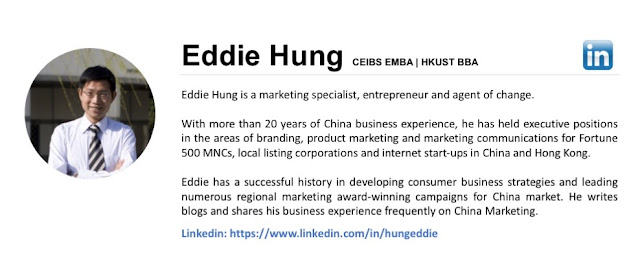How Startups Use AARRR to Drive Business Growth
I have been running several startup projects in recent years, such as developing WeChat applications, local and overseas e-commerces, and opening a yoga studio in Shanghai. In China, startup a new business is never an easy task. The market is almost monopolized by BAT, not to mention thousands of like-us startups operating lost-money business models.
Making a nice business plan ppt can never guarantee success. An idea by itself is worthless. An idea combined with strong local execution can have a chance to survive.
For a startup, we face the challenge of survival. Initially, we always need to sacrifice profit to gain a user. In long run, we have to prove our business model can make profits. From zero to one, entrepreneurs first have to solve the two fundamental issues:
2. How to induce them to buy and make profit?
You may have heard the quote that “if you can’t measure it, you can’t manage it”. In the internet era, it is much easier to collect data during the consumer purchase process. We can then analyze more objectively and make better decision.
It’s a new challenge for marketer on how to dig out meaningful insights from the massive data flood.
I’m now using AARRR framework in daily operation because it’s simple and actionable. It helps me get a deeper understanding of customer funnel based on real data and optimize it for a better decision.
Five Pirate Metrics for Startups
AARRR framework, also called Startup Pirate Metrics or Growth Hacking Funnel, is developed by Dave McClure. It offers an easy and effective tool to measure the customer lifecycle of a business startup. After reading a lot of materials plus my actual practice, I compile a few slides of PPT to explain it clearly.
The AARRR Framework is broken down into five simple metrics: Acquisition, Activation, Retention, Revenue, and Referral.
How to Apply AARRR to Drive Growth?
Let me share our experience. We have launched a new e-commerce website for US market last year. We’ve spent about two months to develop a MVP (minimum viable product or beta version) and launched to market for product/market fit test (PMF). We started to use AARRR framework to measure the five metrics of our customer lifecycle. In the initial stage, our main objective was to attract more visitors to come, sign up (Acquisition) and try our product (Activation). We selected different acquisition channels and track their ad performance. We got insights from the data analysis to improve product and consumer experience. After several upgrades, users are now steadily increasing and the product is ready for viral marketing so we add incentive scheme to encourage sharing, referral and repeat purchase.Here are some figures after 4 month launch and the tactics we’ve used:
Acquisition:
The site has a good acquisition conversion rate of 45%, which means that we have a convincing landing page and good sales talk inducing visitors to sign up.
When the acquisition conversion is good, we can consider to increase advertising expenses to drive more traffic to our site because 45% of new visitors will convert to be registered users.
We’ve tried different channels to drive traffic, such as social media, content marketing, KOL, SEM. We find that UGC video generates the highest impression so it’s an area to explore deeper. Google and facebook ad are very expensive. In the first month, CPA (cost per action) was up to $16 per visitor. We eventually achieve $0.11 after continuous optimization.
Activation:
Retention:
Acquisition of new customers is very expensive. It’s more cost efficient to attract existing users to come back and repeat purchase.
We need to maintain freshness of our site by adding new features and attractive sales campaigns. We've learnt from games and use gamification to attract users to come back, for example, daily check-in to get rewards, surprised deals, etc.
Referral:
Make sure your product or service is good enough and working right before using any referral program. Otherwise the negative word of months will kill your business even faster.
We use two referral programs: 1) Refer a friend, both of you get $5 coupons; 2) Share & get discount coupons; 8% referral rate is not high. We kick off several A/B tests for different referral programs and find out the best way to increase referral rate.
Revenue:
The conversion from subscription to payment is only 5%. In order to increase it, we adapt a new pricing policy, improve pre-sales customer services, and take other steps to convince users to buy.
Besides, we also develop more sales campaigns to drive purchase, such as seasonal promotion, daily deals, bundle sales, etc.
Growth Hacking: Key to Success for Business
Marketers are in a constant search for growing their business. Growth hacking strategies come into play in Silicon Valley, and it is now the key to success for any SMB or startups.
Growth hacking is a process of rapid experimentation across marketing channels and product development to identify the most effective and efficient ways to grow a business.
Growth hacking is redefining marketing. It emphasizes that marketers must now possess a distinctive blend of both coding (product development) and marketing skills. Growth hacking focuses on improving product itself to drive sales, instead of purely using expensive advertising tools. The primary difference between growth marketing and traditional marketing is that growth marketers do not take much time to strategize a marketing plan. Instead, they test to find out which approach is better. This is something that companies of all sizes, startup or even MNCs, can leverage for success.
AARRR framework is perfect for growth hacking which provides simple tools and helps marketers to understand their customer lifecycle by using objective data analysis. Through daily monitoring and control of these metrics, it provides an essential insight on business performance.











Comments
Post a Comment